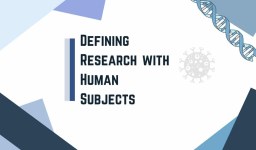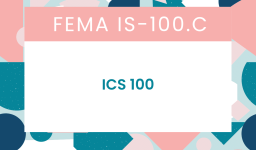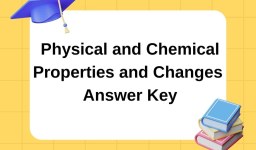Which of these classes of biological molecules does NOT include polymers?
Lipids; fats are NOT polymers but they are large molecules assembled from small ones- glycerol and fatty acids
The characteristic that all lipids have in common is that _____.
none of them dissolves in water
Which of these is NOT a lipid?
RNA;
Are lipids: wax, steroids, cholesterol, phospholipids
What do unsaturated fatty acid tails lack?
Double bonds
Which of these is rich in unsaturated fats?
olive oil; one or more bonds with one fewer hydrogen; liquid at room temperature
A function of cholesterol that does not harm health is its role _____.
Cholesterol is an important component of animal cell membranes.
The presence of many C-C and C-H bonds causes fats to be …
The many C-C and C-H bonds make fats nonpolar and insoluble in water. They can also be oxidized, releasing much energy.
In fat synthesis,________and fatty acids combine to make fats plus________.
glycerol;water
In the reaction that builds a fat,________ groups react with ________ groups.
hydroxyl; carboxyl
Fatty acids supply the carboxyl groups; the hydroxyls come from glycerol.
Fats vary with respect to the number of …
C atoms in the tails. and double bonds in the tails.
Tail lengths of 16 to 22 are common. There may be from 0 to 6 double bonds.
A food company hydrogenated a barrel of fat. The treatment …
Hydrogenation removes double bonds, so the tails can straighten. Do you know why that makes the fats less fluid?
The most unsaturated fats have …
the most double bonds.
Every double bond is a place where hydrogen could be added.
What do DNA, proteins, and fats have in common?
They contain carbonyl groups.
Which of the following statements concerning unsaturated fats is true?
They have double bonds in the carbon chains of their fatty acids.
What do fats, steroids, and waxes have in common?
Low solubility in water.
Dr. Haxton told one of his students, “To move in the bloodstream, fats need the help of phospholipids.” What would a good student say?
Yes. Nonpolar molecules aren’t compatible with water.
Water rejects nonpolar molecules such as fats, so fats travel inside particles that are coated with polar parts of phospholipids and proteins.
Phospholipids are most important for …
preventing leakage from cells.
Every cell depends on phospholipid bilayers to limit leakage of molecules through membranes.
To find the best source of phospholipids, look at …
membranes; The great majority of a cell’s phospholipids occur in membranes.
What do phosphoglycerides and fats have in common?
Ester linkages; Like fats, phosphoglycerides are made by coupling fatty acids to glycerol by means of ester linkages.
Which statement is true of phospholipids?
Their synthesis uses fatty acids, Some of their tails have double bonds and They all ioniz
Which fact is most important in causing phospholipids to behave as they do in water?
Water molecules make hydrogen bonds;
The hydrogen bonds in water exclude the nonpolar tails of phospholipids, forcing the molecules into a bilayer.
In a membrane, the________of the phospholipids in one monolayer face the________of the phospholipids in the other monolayer.
tails; tails
Water on both sides of the membrane excludes the tails, forcing them into the interior where they face one another.
It is difficult for molecules to pass through the phospholipid bilayer because …
polar molecules attract one another.
Polar molecules have trouble escaping from the water to enter a membrane, and nonpolar molecules have trouble moving from the membrane into water. Thus, neither kind of molecule moves easily through membranes.
Which lipid is most amphipathic?
Phospholipid
A phospholipid has a strongly polar (charged) head and two nonpolar tails.
The molecule shown here probably … (phospolipid)
is structurally related to a fat, is highly amphipathic and is made partly from fatty acids.
Phospholipids are close relatives of fats, but the difference makes them amphipathic and allows them to form the basis of membranes. Important stuff!
How do phospholipids interact with water molecules?
The polar heads interact with water; the nonpolar tails do not.
Steroids are considered to be lipids because they _____.
are NOT soluble in water
What does cholesterol have in common with sex hormones?
Four linked rings
For good health, you don’t want your body to run the LDL part of this diagram faster than the HDL part because …
LDL cholesterol is stored; HDL cholesterol is destroyed
If LDL exceeds HDL, your body is probably storing excess cholesterol, which may clog the arteries and cause heart disease.
What is the function of Structure E? (Cholesterol)
stabilization of the phospholipids
Identify Structure A. (glycoprotein) How can you tell?
It is composed of both a carbohydrate and a protein.
Which of the following is least likely to be important in holding the components of a biological membrane together?
covalent interactions between the phospholipid and protein components of the membrane
This is not an important interaction because there are rarely covalent bonds between the phospholipids and integral membrane proteins.
Things important in holding the components of a biological membrane together?
-polar interactions among the phospholipid head groups on the same surface of the membrane
-hydrophobic interactions among the fatty acid tails of phospholipids on opposite sides of the membrane
-hydrophobic interactions between the phospholipid tails and the surface of integral membrane proteins buried in the membrane
-hydrophobic interactions among the fatty acid tails of phospholipids on the same side of the membrane
Which of the following is a reasonable explanation for why unsaturated fatty acids help keep a membrane more fluid at lower temperatures?
The double bonds form kinks in the fatty acid tails, preventing adjacent lipids from packing tightly.
In what way do the membranes of a eukaryotic cell vary?
Certain proteins are unique to each membrane.
What do fats, steroids, and waxes have in common?
(a) Moderate polarity.
(b) Low solubility in water.
(c) They occur in membranes.
Both (a) and (c).
Both (b) and (c).
(b) Low solubility in water.
Dr. Haxton told one of his students, “To move in the bloodstream, fats need the help of phospholipids.” What would a good student say?
-You have it backwards. Fats help phospholipids to travel.
-Not so. Fats are small enough to travel easily without help.
-Sorry, Dr. Haxton! Help comes from cholesterol, not phospholipids.
-Yes. Nonpolar molecules aren’t compatible with water.
-Right. Fats are too polar to travel alone in water.
Yes. Nonpolar molecules aren’t compatible with water.
The presence of many C-C and C-H bonds causes fats to be …
(a) rich in energy.
(b) insoluble in water.
(c) low in energy.
Both (a) and (b).
Both (b) and (c).
Both (a) and (b).
In fat synthesis,________and fatty acids combine to make fats plus________.
-phosphate; glycerol
-glycerol; water
-esters; phosphate
-glucose; phosphate
-esters; water
glycerol; water
In the reaction that builds a fat,________ groups react with ________ groups.
-sulfhydryl; carboxyl
-hydroxyl; carboxyl
-hydroxyl; phosphate
-phosphate; amino
-carboxyl; amino
hydroxyl; carboxyl
Triglycerides vary with respect to the number of …
(a) hydrocarbon tails.
(b) C atoms in the tails.
(c) double bonds in the tails.
Both (b) and (c).
All of the above.
Both (b) and (c).
A food company hydrogenated a barrel of fat. The treatment …
(a) made the fat less fluid.
(b) made the fat less saturated.
(c) lengthened the fat tails.
(d) put more bends (kinks) in the fat tails.
Both (a) and (d).
(a) made the fat less fluid.
The most unsaturated fats have …
-the longest hydrocarbon tails.
-the fewest double bonds.
-the most double bonds.
-the highest ratio of H to C.
-the shortest hydrocarbon tails.
the most double bonds.
What do DNA, proteins, and fats have in common?
-They are polymers.
-They are polar.
-They contain carbonyl groups.
-They contain nitrogen.
-They contain phosphorus.
They contain carbonyl groups.
Which of these is NOT a lipid?
-RNA
-cholesterol
-steroids
-phospholipid
-wax
RNA
Which of these is rich in unsaturated fats?
-butter
-lard
-a fat that is solid at room temperature
-beef fat
-olive oil
olive oil
A function of cholesterol that does not harm health is its role _____.
-as a component of animal cell membranes
-in calcium and phosphate metabolism
-All of cholesterol’s effects cause the body harm.
-the most abundant male sex hormone
-as the primary female sex hormone
as a component of animal cell membranes
Let us know if this was helpful. That’s the only way we can improve.



